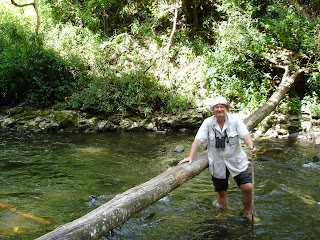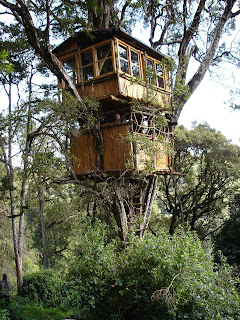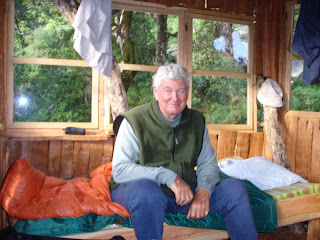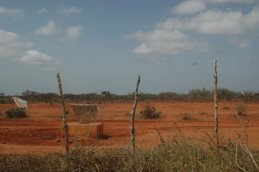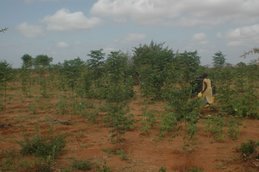

Wednesday, November 21, 2007
Tuesday, November 13, 2007
Curriculum for wildlife clubs
Wildlife Club Community Project 2007 -2008
Aberdares Conservation Area Bongo Surveillance programme
Index
1) Teachers /Head Letter of Introduction and objectives of programme. (signed from Rhino Ark and Mike Prettejohn-Bongo Surveillance)
2) Grant Funding, Key sponsors and Timescales – Information (Mike Prettejohn, United Nations Development Project)
3) Session plans by week for Wildlife Clubs (17/9/07 to End of term December – phase one)
4) Overview of speaker plans for 2008
5) Letter to parents with Club objectives and Visit to Aberdares National
Park plans.
6) Patron letter of support request (Mike Prettejohn/Rhino Ark)
7) Recommended Research materials – documents.
Fencing Update information – Rhino Ark (magazine/leaflet)
Birds of East Africa
Mammals of Africa
Bongo Surveillance Project
Aberdares KWS leaflet
8) Certificate “sample” Wildlife Club and Tree Growth Year One (complete)
Wildlife Club Community Project 2007 -2008
Aberdares Conservation Area Bongo Surveillance programme
Week Commencing - 17th September 2007 – Session One
Introduction to Programme:-
• What is the objective of the Wildlife Club Programme
To help create awareness in the local schools and community of the importance of the “very special environment” they live in. How the Aberdares are recognised worldwide. To highlight the need to conserve the habitat, the forests and protect the threatened species of wildlife, living in the Aberdares. (i.e. Bongo, Rhino )
• Previous Club successes. Awareness, tree planting and fun visits. Has the school planted trees? If so, how many, how long have they been there, who looks after them?
• Who are the key sponsors? U.N. Development project, Rhino Ark, Bongo Surveillance Project.
• Why is the programme important?
Kenya is a diverse landscape.
Importance of preserving unique landscape, wildlife and culture
Mt Kenya, Aberdares vital for water supplies – Kenya/Nairobi (and effects on
Agriculture, Living)
• What will the Wildlife Clubs mean to the school?
Create opportunity for learning more about conservation whilst having fun. The schools are a priority as part of the programme.
• Describe Bongo surveillance operations? (See reports – discuss from KWS photographs to trap camera)
• Rhino Ark – Aberdare fencing project and Rhino protection. Benefits in minimizing human conflicts with wildlife.
• Kenya Wildlife Service. Government sees as a high priority wildlife conservation and eradication of poaching.
• Laikipia Wildlife forum (a mention?)
• List what forms part of their local environment?
Homes, school, forest, park, rivers, lakes, shamba
• Why protect environment?
Local Conservation – Trees, Rivers, Tourism, Agriculture
World picture - Global warming – rain patterns drought, floods, erosion from deforestation. Charcoal Burning – Indigenous trees – illegal - Legislation
Q: What does environment mean?
A: Our environment includes all the living and non-living factors which surround us.
Homework:
Give 5 examples of living and non-living factors in our environment.
Air
Water
Soil
Rock
Organic matter (dead leaves, animal carcass, dead wood)
Mammals
Trees
Insects
Bacteria
Birds
Fungi
Protozoa
• Task – Logo and Motto for Club
Pass out books and give instruction on what they will be used for: doing homework, field guides, and notes. Design front cover at home.
Wildlife Club Community Project 2007 -2008
Aberdares Conservation Area Bongo Surveillance programme
Week commencing 24th September 2007 – Session Two
Identification in the field: hand out identification sheets to be labelled and coloured.
Mammals Examples: -
Primates – Monkeys Colobus, baboons, vervet etc
Carnivora – Jackals, wild dog, mongoose, lion, cheetah, leopard,
Aardvark,
Elephant,
Wild Pig – Wart Hog, Giant Forest hog,
Rhinoceroses – Black and White
Giraffe
Kudu, bushbuck
Eland, bongo
Gazelle
Impala
Duiker
Birds Examples:
Over 270 bird species have been recorded in the Aberdares, including globally threatened species and restricted range species
Hawks
Kites,
Ibis,
Nightjar
Kingfishers
Cuckoo
Woodpeckers
Weaver
Starling
Aberdares National Park
Fencing – Facts:-
The range stretches over 125 km, 3rd highest mountain range Kenya, with 2 main peaks – 4001 metres, and 3906 metres. Rainfall 900 -2600mm annually.
The Aberdares range plays a critical role in water catchments, providing much of the nation’s water supplies.
See KWS leaflet
Landscape – diverse especially with altitude
1900 – 3000m Canopy Forest Belt Zone
3000 -3300 Bamboo Zone
3000 – 3500 – Sub Alpine
3500 - Alpine
Tourism – Why Important?
Employment:-
• Service industry (hotels, camps, shops, transport, restaurants)
• Safari (guides)
• Travel – Drivers, pilots
• Tour Agencies
• Gifts – Creative gifts from handmade jewellery to bird boxes
Benefits of putting a tree back!!
• Oxygen
• Soil conservation
• Timber
• Non timber products (medicinal trees, oils, nuts, fruits)
• Transpiration (moister leaving the tree through its leaves and entering the atmosphere increasing rainfall.
• Shade
• Wildlife habitat birds hyrax.
• Tenure security due to investment (planting trees shows long-term investment in private property.
How to care for your tree!!
11 Steps:-
1. Prepare and Select Site (spacing and fencing).
2. Select species of tree to plant.
3. Prepare deep enough hole 2ft by 2 ft.
4. Add manure to the bottom of the hole.
5. Remove tree from polythene bag and put it in hole.
6. Fill the area around the tree with soil.
7. Make sue the base of the tree is at the deepest point in the hole.
8. Water regularly.
9. Weed and clear grass from base.
10. Plant vegetables at base (optional)
11. Prune lower branches when necessary.
Animal/Human conflict
• Trapping animals (poaching).
• Destruction of crops. Fence program
Forest/Human conflict
• Use of indigenous trees for Domestic use (cooking/building)
• Reinvesting in private land to curb indigenous timber use.
Options to above:-
• Alternative Income (farming trees for-timber and wood fuels, tea, livestock, fisheries etc.
• Alternative ways of Cooking (Jiko reducing charcoal consumption, LPG usage and distribution.
Homework: How much charcoal, wood fuel does your family use per month?
Have your parents planted trees, what species how many?
Does your family have livestock?
If your family farms what do they farm?
Wildlife Club Community Project 2007 -2008
Aberdares Conservation Area Bongo Surveillance programme
Week commencing 1st October 2007 – Session Three
1) Recap - Ideas for task and motto for club
Field Identification
Trees In Aberdares Range– Hand out identification sheets.
Camphor
Cedar
Podo
Hagenai
Olives
Cape Chestnuts
Fastest Growing trees for planting projects
What species of tree would you grow on your land? Why?
2) Tree planting exercise. Prepare holes and buy seedlings or look to local producers of seedlings.
Homework: each takes home five seedlings and plant them at home in a secure place. Record where and how you planted the trees in your exercise book.
Wildlife Club Community Project 2007 -2008
Aberdares Conservation Area Bongo Surveillance programme
Week commencing 8th October 2007 – Session Four
Re – cap on last session
How are trees doing? Reports
Quiz Questions:-
1) Name 3 types of indigenous trees (local)
2) Name 3 types of monkey
3) What is the most rare antelope
4) What fish are found in the mountain streams of the Aberdares
5) What is the highest mountain in Kenya
6) Name 5 types of bird
7) Describe the Flora and how this changes with altitude on Mt Kenya
8) What does KWS stand for?
9) Who is Rhino Ark and what do they do?
10) What does the Bongo surveillance project do?
Task this week:-
Prepare a picture for use in a calendar for 2008.
1) Show an animal from Kenya (ideally Aberdares /Mount Kenya area) living in their habitat. This may be as a single animal or as a family group.
2) Show an environmental issue of your choice, pollution (water, air, ground), habitat destruction, erosion, tree planting, tea farming, fruit and veg. Farming etc.
3) Show what your environment looks like outside and inside the park fence. Rivers, farms, forest, buildings, animals etc…
Wildlife Club Community Project 2007 -2008
Aberdares Conservation Area Bongo Surveillance programme
Week commencing 15th October 2007 – Session Five
Visits to Aberdare National Park
Facts of Aberdare National Park (guide book, map and pamphlet)
Recap from Previous session – see KWS leaflet
Take field identification books to check off animals seen.
To arrange in advance of 15th October 2007: -
Transport – Book KWS Bus for Wildlife Clubs/Teachers
Arrange Club entry fees
Within Aberdares National Park Meeting Point - Awards for 12 Winners of Calendar Drawings January to December (3 from each of 4 schools)
Prizes for Quiz Winners and Runners up. Lucky Dip.
Sponsorship for Prizes for above
Sponsorship for Food and Drinks to Club
Sponsorship for Calendar and production of print.
Wildlife Club Community Project 2007 -2008
Aberdares Conservation Area Bongo Surveillance programme
Week commencing 22nd October 2007 – Session Six
Re- cap on Aberdares Visit
Questions on Aberdares National Park.
Bongo Surveillance Project Update (Project papers from MGP)
Pictures from trap camera
How are trees doing?
Measurement of trees
After Visit – Tape sounds of animals (Guess what animal)
Wildlife Club Community Project 2007 -2008
Aberdares Conservation Area Bongo Surveillance program
Week commencing 22nd October 2007 – Session Seven
Recycling – Protecting Our Environment
1) Collect Rubbish
2) What to do with rubbish
3) Recycling of Rubbish (Kiunga flip-flop project)
4) Creative ideas for recycling (collage, use as planting bags, paper mache)
5) Discuss building of dustbin in local centre and hole for burying rubbish. Organize community rubbish collection day and free lunch.
Homework: what does your family do with its rubbish?
Does your family recycle?
Wildlife Club Community Project 2007 -2008
Aberdares Conservation Area Bongo Surveillance programme
Week commencing 29th October 2007 – Session Eight
Introduction to National Parks across Kenya
(Use Map of Kenya to demonstrate locations). Show map of Kenya National Parks and Reserves.
From North to South: -
National parks (There are also a number of reserves and other conservation areas such as Lewa and Sangare)
Sibiloi
Mt Elgon
Marsabit
Losai
Samburu
Kakamega Forest
Ruma
Amboseli
Tsavo west, east
Aberdares and Mt Kenya
Nairobi
Hells Gate
Longonot
Meru
Kera
Ol Dolnyo
Massai Mara
Marine Parks
Wildlife Club Community Project 2007 -2008
Aberdares Conservation Area Bongo Surveillance programme
Week commencing 5th November 2007 – Session Nine
Recap: Recycling
Tree Planting (how are they doing)
National Park’s sessions continued
For this session suggest – materials from KWS, with main focus on Mt Kenya and Aberdares.
12 and 19 November 2007 – No sessions
Wildlife Club Community Project 2007 -2008
Aberdares Conservation Area Bongo Surveillance programme
Week commencing 6th December 2007 – Session Ten
6th December – Open Week “Wildlife Clubs” – Display stand of activity each school. VIP/Patrons of Club - visit to school to view and give speech on activity.
Incentives for tree activity and tree “champions”.
Wildlife Club Community Project 2007 -2008
Aberdares Conservation Area Bongo Surveillance programme
NEW Term Commencing in 2008 – Session Plans to be advised.
Options Term 2
January to March 2008
Key Speakers to support programme
To Contact:-
KWS – Warden
Rhino Ark
Richard Leakey
Area MP
Heads
D.O.’s
Best practice: Conservation Business Leaders, Sangare, The Ark, The Outspan
Mount Kenya Safari Camp, Laikipia Wildlife Forum
Professor Wangari Maathai?
Aberdares Conservation Area Bongo Surveillance programme
Index
1) Teachers /Head Letter of Introduction and objectives of programme. (signed from Rhino Ark and Mike Prettejohn-Bongo Surveillance)
2) Grant Funding, Key sponsors and Timescales – Information (Mike Prettejohn, United Nations Development Project)
3) Session plans by week for Wildlife Clubs (17/9/07 to End of term December – phase one)
4) Overview of speaker plans for 2008
5) Letter to parents with Club objectives and Visit to Aberdares National
Park plans.
6) Patron letter of support request (Mike Prettejohn/Rhino Ark)
7) Recommended Research materials – documents.
Fencing Update information – Rhino Ark (magazine/leaflet)
Birds of East Africa
Mammals of Africa
Bongo Surveillance Project
Aberdares KWS leaflet
8) Certificate “sample” Wildlife Club and Tree Growth Year One (complete)
Wildlife Club Community Project 2007 -2008
Aberdares Conservation Area Bongo Surveillance programme
Week Commencing - 17th September 2007 – Session One
Introduction to Programme:-
• What is the objective of the Wildlife Club Programme
To help create awareness in the local schools and community of the importance of the “very special environment” they live in. How the Aberdares are recognised worldwide. To highlight the need to conserve the habitat, the forests and protect the threatened species of wildlife, living in the Aberdares. (i.e. Bongo, Rhino )
• Previous Club successes. Awareness, tree planting and fun visits. Has the school planted trees? If so, how many, how long have they been there, who looks after them?
• Who are the key sponsors? U.N. Development project, Rhino Ark, Bongo Surveillance Project.
• Why is the programme important?
Kenya is a diverse landscape.
Importance of preserving unique landscape, wildlife and culture
Mt Kenya, Aberdares vital for water supplies – Kenya/Nairobi (and effects on
Agriculture, Living)
• What will the Wildlife Clubs mean to the school?
Create opportunity for learning more about conservation whilst having fun. The schools are a priority as part of the programme.
• Describe Bongo surveillance operations? (See reports – discuss from KWS photographs to trap camera)
• Rhino Ark – Aberdare fencing project and Rhino protection. Benefits in minimizing human conflicts with wildlife.
• Kenya Wildlife Service. Government sees as a high priority wildlife conservation and eradication of poaching.
• Laikipia Wildlife forum (a mention?)
• List what forms part of their local environment?
Homes, school, forest, park, rivers, lakes, shamba
• Why protect environment?
Local Conservation – Trees, Rivers, Tourism, Agriculture
World picture - Global warming – rain patterns drought, floods, erosion from deforestation. Charcoal Burning – Indigenous trees – illegal - Legislation
Q: What does environment mean?
A: Our environment includes all the living and non-living factors which surround us.
Homework:
Give 5 examples of living and non-living factors in our environment.
Air
Water
Soil
Rock
Organic matter (dead leaves, animal carcass, dead wood)
Mammals
Trees
Insects
Bacteria
Birds
Fungi
Protozoa
• Task – Logo and Motto for Club
Pass out books and give instruction on what they will be used for: doing homework, field guides, and notes. Design front cover at home.
Wildlife Club Community Project 2007 -2008
Aberdares Conservation Area Bongo Surveillance programme
Week commencing 24th September 2007 – Session Two
Identification in the field: hand out identification sheets to be labelled and coloured.
Mammals Examples: -
Primates – Monkeys Colobus, baboons, vervet etc
Carnivora – Jackals, wild dog, mongoose, lion, cheetah, leopard,
Aardvark,
Elephant,
Wild Pig – Wart Hog, Giant Forest hog,
Rhinoceroses – Black and White
Giraffe
Kudu, bushbuck
Eland, bongo
Gazelle
Impala
Duiker
Birds Examples:
Over 270 bird species have been recorded in the Aberdares, including globally threatened species and restricted range species
Hawks
Kites,
Ibis,
Nightjar
Kingfishers
Cuckoo
Woodpeckers
Weaver
Starling
Aberdares National Park
Fencing – Facts:-
The range stretches over 125 km, 3rd highest mountain range Kenya, with 2 main peaks – 4001 metres, and 3906 metres. Rainfall 900 -2600mm annually.
The Aberdares range plays a critical role in water catchments, providing much of the nation’s water supplies.
See KWS leaflet
Landscape – diverse especially with altitude
1900 – 3000m Canopy Forest Belt Zone
3000 -3300 Bamboo Zone
3000 – 3500 – Sub Alpine
3500 - Alpine
Tourism – Why Important?
Employment:-
• Service industry (hotels, camps, shops, transport, restaurants)
• Safari (guides)
• Travel – Drivers, pilots
• Tour Agencies
• Gifts – Creative gifts from handmade jewellery to bird boxes
Benefits of putting a tree back!!
• Oxygen
• Soil conservation
• Timber
• Non timber products (medicinal trees, oils, nuts, fruits)
• Transpiration (moister leaving the tree through its leaves and entering the atmosphere increasing rainfall.
• Shade
• Wildlife habitat birds hyrax.
• Tenure security due to investment (planting trees shows long-term investment in private property.
How to care for your tree!!
11 Steps:-
1. Prepare and Select Site (spacing and fencing).
2. Select species of tree to plant.
3. Prepare deep enough hole 2ft by 2 ft.
4. Add manure to the bottom of the hole.
5. Remove tree from polythene bag and put it in hole.
6. Fill the area around the tree with soil.
7. Make sue the base of the tree is at the deepest point in the hole.
8. Water regularly.
9. Weed and clear grass from base.
10. Plant vegetables at base (optional)
11. Prune lower branches when necessary.
Animal/Human conflict
• Trapping animals (poaching).
• Destruction of crops. Fence program
Forest/Human conflict
• Use of indigenous trees for Domestic use (cooking/building)
• Reinvesting in private land to curb indigenous timber use.
Options to above:-
• Alternative Income (farming trees for-timber and wood fuels, tea, livestock, fisheries etc.
• Alternative ways of Cooking (Jiko reducing charcoal consumption, LPG usage and distribution.
Homework: How much charcoal, wood fuel does your family use per month?
Have your parents planted trees, what species how many?
Does your family have livestock?
If your family farms what do they farm?
Wildlife Club Community Project 2007 -2008
Aberdares Conservation Area Bongo Surveillance programme
Week commencing 1st October 2007 – Session Three
1) Recap - Ideas for task and motto for club
Field Identification
Trees In Aberdares Range– Hand out identification sheets.
Camphor
Cedar
Podo
Hagenai
Olives
Cape Chestnuts
Fastest Growing trees for planting projects
What species of tree would you grow on your land? Why?
2) Tree planting exercise. Prepare holes and buy seedlings or look to local producers of seedlings.
Homework: each takes home five seedlings and plant them at home in a secure place. Record where and how you planted the trees in your exercise book.
Wildlife Club Community Project 2007 -2008
Aberdares Conservation Area Bongo Surveillance programme
Week commencing 8th October 2007 – Session Four
Re – cap on last session
How are trees doing? Reports
Quiz Questions:-
1) Name 3 types of indigenous trees (local)
2) Name 3 types of monkey
3) What is the most rare antelope
4) What fish are found in the mountain streams of the Aberdares
5) What is the highest mountain in Kenya
6) Name 5 types of bird
7) Describe the Flora and how this changes with altitude on Mt Kenya
8) What does KWS stand for?
9) Who is Rhino Ark and what do they do?
10) What does the Bongo surveillance project do?
Task this week:-
Prepare a picture for use in a calendar for 2008.
1) Show an animal from Kenya (ideally Aberdares /Mount Kenya area) living in their habitat. This may be as a single animal or as a family group.
2) Show an environmental issue of your choice, pollution (water, air, ground), habitat destruction, erosion, tree planting, tea farming, fruit and veg. Farming etc.
3) Show what your environment looks like outside and inside the park fence. Rivers, farms, forest, buildings, animals etc…
Wildlife Club Community Project 2007 -2008
Aberdares Conservation Area Bongo Surveillance programme
Week commencing 15th October 2007 – Session Five
Visits to Aberdare National Park
Facts of Aberdare National Park (guide book, map and pamphlet)
Recap from Previous session – see KWS leaflet
Take field identification books to check off animals seen.
To arrange in advance of 15th October 2007: -
Transport – Book KWS Bus for Wildlife Clubs/Teachers
Arrange Club entry fees
Within Aberdares National Park Meeting Point - Awards for 12 Winners of Calendar Drawings January to December (3 from each of 4 schools)
Prizes for Quiz Winners and Runners up. Lucky Dip.
Sponsorship for Prizes for above
Sponsorship for Food and Drinks to Club
Sponsorship for Calendar and production of print.
Wildlife Club Community Project 2007 -2008
Aberdares Conservation Area Bongo Surveillance programme
Week commencing 22nd October 2007 – Session Six
Re- cap on Aberdares Visit
Questions on Aberdares National Park.
Bongo Surveillance Project Update (Project papers from MGP)
Pictures from trap camera
How are trees doing?
Measurement of trees
After Visit – Tape sounds of animals (Guess what animal)
Wildlife Club Community Project 2007 -2008
Aberdares Conservation Area Bongo Surveillance program
Week commencing 22nd October 2007 – Session Seven
Recycling – Protecting Our Environment
1) Collect Rubbish
2) What to do with rubbish
3) Recycling of Rubbish (Kiunga flip-flop project)
4) Creative ideas for recycling (collage, use as planting bags, paper mache)
5) Discuss building of dustbin in local centre and hole for burying rubbish. Organize community rubbish collection day and free lunch.
Homework: what does your family do with its rubbish?
Does your family recycle?
Wildlife Club Community Project 2007 -2008
Aberdares Conservation Area Bongo Surveillance programme
Week commencing 29th October 2007 – Session Eight
Introduction to National Parks across Kenya
(Use Map of Kenya to demonstrate locations). Show map of Kenya National Parks and Reserves.
From North to South: -
National parks (There are also a number of reserves and other conservation areas such as Lewa and Sangare)
Sibiloi
Mt Elgon
Marsabit
Losai
Samburu
Kakamega Forest
Ruma
Amboseli
Tsavo west, east
Aberdares and Mt Kenya
Nairobi
Hells Gate
Longonot
Meru
Kera
Ol Dolnyo
Massai Mara
Marine Parks
Wildlife Club Community Project 2007 -2008
Aberdares Conservation Area Bongo Surveillance programme
Week commencing 5th November 2007 – Session Nine
Recap: Recycling
Tree Planting (how are they doing)
National Park’s sessions continued
For this session suggest – materials from KWS, with main focus on Mt Kenya and Aberdares.
12 and 19 November 2007 – No sessions
Wildlife Club Community Project 2007 -2008
Aberdares Conservation Area Bongo Surveillance programme
Week commencing 6th December 2007 – Session Ten
6th December – Open Week “Wildlife Clubs” – Display stand of activity each school. VIP/Patrons of Club - visit to school to view and give speech on activity.
Incentives for tree activity and tree “champions”.
Wildlife Club Community Project 2007 -2008
Aberdares Conservation Area Bongo Surveillance programme
NEW Term Commencing in 2008 – Session Plans to be advised.
Options Term 2
January to March 2008
Key Speakers to support programme
To Contact:-
KWS – Warden
Rhino Ark
Richard Leakey
Area MP
Heads
D.O.’s
Best practice: Conservation Business Leaders, Sangare, The Ark, The Outspan
Mount Kenya Safari Camp, Laikipia Wildlife Forum
Professor Wangari Maathai?
Wildlife clubs brief
Wildlife Clubs Aberdares
Initial Visit
10th and 11th September 2007
According to the wildlife club mandate set up by the Bongo Surveillance Program, the Rhino Ark, and UNDP 4 primary schools have been chosen along the Aberdare fence line.
The 4 schools chosen all lie within walking distance from the park fence along the Eastern boundary of the Aberdare Park.
Students from Standard 5 and 6 have been chosen for the wildlife clubs. This is so that the students will be in school for at least two years. In some schools the number of students in the two classes is to many to facilitate so only one class will be taught in this case.
The furthest school north is located near Rhino Gate in the north Aberdares. The name of this school is Kamburaini Primary School.
The name of the Headmaster is: Mr. Muthangi
Tel: 0726768140
The name of the teacher responsible for teaching the club is: Mr. Muchemi Tel:0726735557
There are a total of 55 students in Std. 5 and 6.
The arranged meeting day is Tuesdays at 15:10 to 16:10.
The next school is on route to the Ark Gate behind Mweiga town. The name of the school is Mbondeni Primary School.
The name of the Headmaster is: Mr. Gecece
Tel:0727860444
The name of the teacher responsible for teaching the club is: Lucy Gichuke Tel: N/A
There are a total of 65 students in Std. 5 and 6.
The arranged meeting day is Wednesday at 14:10 to 15:10.
Further south near Chinga behind Othya Town Gichami Primary School was visited.
The name of the headmaster is: John Irunga
Tel: 0720808953
The name of the teacher responsible for teaching the club is: Charles Thuku Gachu
Tel:;0725046113
There are a total of 69 students in Std. 5 and 6.
The arranged meeting day is Thursdays at 14:10 to 15:10
The furthest school south is Karurumo Primary School.
The Headmaster’s name is: Zackary Warwimbo Ruhangi
Tel:0723752719
The name of the teacher responsible for teaching the club is: Festus Maina Tell: 0720677298
There are a total of 95 students in Std. 5 and 6.
The arranged meeting time is Friday at 14:10 to 15:10
By road it took 320KM to visit all 4 schools.
Initial Visit
10th and 11th September 2007
According to the wildlife club mandate set up by the Bongo Surveillance Program, the Rhino Ark, and UNDP 4 primary schools have been chosen along the Aberdare fence line.
The 4 schools chosen all lie within walking distance from the park fence along the Eastern boundary of the Aberdare Park.
Students from Standard 5 and 6 have been chosen for the wildlife clubs. This is so that the students will be in school for at least two years. In some schools the number of students in the two classes is to many to facilitate so only one class will be taught in this case.
The furthest school north is located near Rhino Gate in the north Aberdares. The name of this school is Kamburaini Primary School.
The name of the Headmaster is: Mr. Muthangi
Tel: 0726768140
The name of the teacher responsible for teaching the club is: Mr. Muchemi Tel:0726735557
There are a total of 55 students in Std. 5 and 6.
The arranged meeting day is Tuesdays at 15:10 to 16:10.
The next school is on route to the Ark Gate behind Mweiga town. The name of the school is Mbondeni Primary School.
The name of the Headmaster is: Mr. Gecece
Tel:0727860444
The name of the teacher responsible for teaching the club is: Lucy Gichuke Tel: N/A
There are a total of 65 students in Std. 5 and 6.
The arranged meeting day is Wednesday at 14:10 to 15:10.
Further south near Chinga behind Othya Town Gichami Primary School was visited.
The name of the headmaster is: John Irunga
Tel: 0720808953
The name of the teacher responsible for teaching the club is: Charles Thuku Gachu
Tel:;0725046113
There are a total of 69 students in Std. 5 and 6.
The arranged meeting day is Thursdays at 14:10 to 15:10
The furthest school south is Karurumo Primary School.
The Headmaster’s name is: Zackary Warwimbo Ruhangi
Tel:0723752719
The name of the teacher responsible for teaching the club is: Festus Maina Tell: 0720677298
There are a total of 95 students in Std. 5 and 6.
The arranged meeting time is Friday at 14:10 to 15:10
By road it took 320KM to visit all 4 schools.
Saturday, November 10, 2007
Friday, November 9, 2007
Monday, May 7, 2007
Subscribe to:
Comments (Atom)





